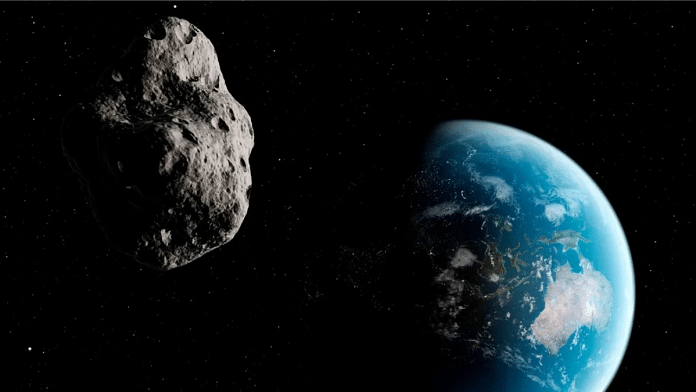New Delhi: A new research paper has found that an asteroid called 2024 PT5 is going to captured by the Earth’s gravitational pull and orbit the planet for two months. Published in RNAAS journal, the study talks about how Near-Earth Objects (NEOs) are sometimes dragged by the Earth and become ‘mini-moons’ of our planet. The current asteroid was discovered in August this year, and is barely 10 metres in size.
Based on the asteroid’s orbit, size, and previous paths, the researchers found that it would be pulled into the Earth’s orbit from 29 September to 25 November. However, many NEOs that become mini-moons of the Earth do not complete a full orbit, and 2024 PT5 is one such asteroid. It is part of the Arjuna asteroid belt, which consists of NEOs. Read more here.
Microplastics in coral skeletons
A new study based in the Gulf of Thailand finds that there are microplastics present in every aspect of coral anatomy—the surface mucus layer, the tissue, and the skeleton. Published in Science of The Total Environment Journal on 18 September, this study shows how certain species of corals and certain aspects of the coral anatomy have a lot more microplastic accumulation than the rest—thus also providing an explanation for where most of the oceanic plastic litter lies.
The researchers used 27 coral samples from four different coral species on the Si Chang Island coast in the Gulf of Thailand. They found that some species, like the P. cf. damicornis, had more than 52 percent microplastic presence in the skeleton, while other species had varying amounts of microplastic concentrations in different components. The researchers identified that the study is important to assess microplastic accumulation in the oceans, especially in corals. Read more here.
How rivers change courses could be used to forecast flooding
A new study in Nature came up with a risk assessment framework for river avulsions—the process by which a river changes its course which often leads to flooding. Published on 18 September, the study, which is being called a ‘breakthrough’ by Indiana University, uses satellite data to understand the topography of 174 rivers and riverbeds.
The two commonly accepted reasons for river avulsions are a change in the water level of a river or a change in the slope inclination next to the river. However, the study found that avulsions like that of the Kosi river in 2008 in Bihar actually happen due to both these reasons working together. River avulsions are more common either near the coast or in mountainous regions, and using topographic maps the researchers have come up with a system to predict which rivers are vulnerable to changing their course. The study says that the findings will be useful for the Global South where flooding from rivers is a common occurrence. Read more here.
Ice quality of lakes affected by global warming
In a blow to ice-sports enthusiasts, a new 18 September study in Nature Reviews Earth & Environment journal analyses how the quality of ice on lakes is impacted due to global warming across the Northern Hemisphere. The study looks at the thickness of ice, and the presence of black and white ice across lakes—while white ice is thinner, weaker, and has more air bubbles, black ice is stronger and more stable.
The researchers used ice samples from Lake Simcoe and Paint Lake and found how there were thinner layers of black ice being formed, and the ice season itself was lasting for a shorter period of time. This meant more dangerous conditions not just for ice hockey, skating and snow-mobile sports, but also difficult for ice trucks and anglers used to deliver goods and services to remote areas in Canada, Finland and Sweden. These three countries have also witnessed deaths due to falling through weak ice in the past decade. The study also explained how ice controls the amount of sunlight and nutrients that reach the lake biodiversity underneath, and weaker quality ice will affect it negatively. Read more here.
Also read: A lethal fungus has wiped out bats in some US counties & it led to increased infant deaths






